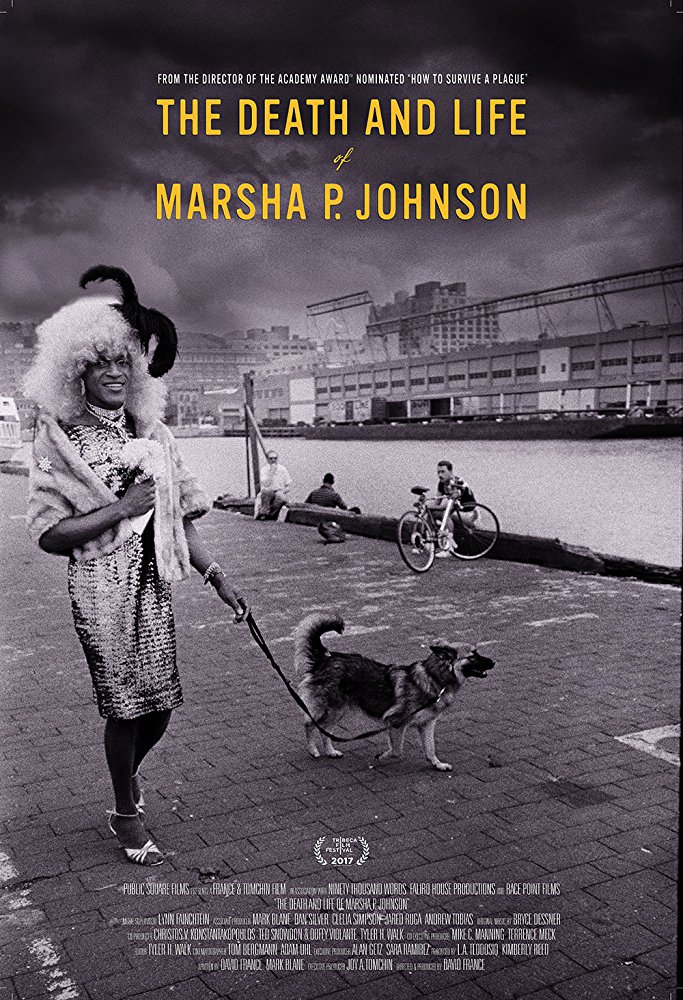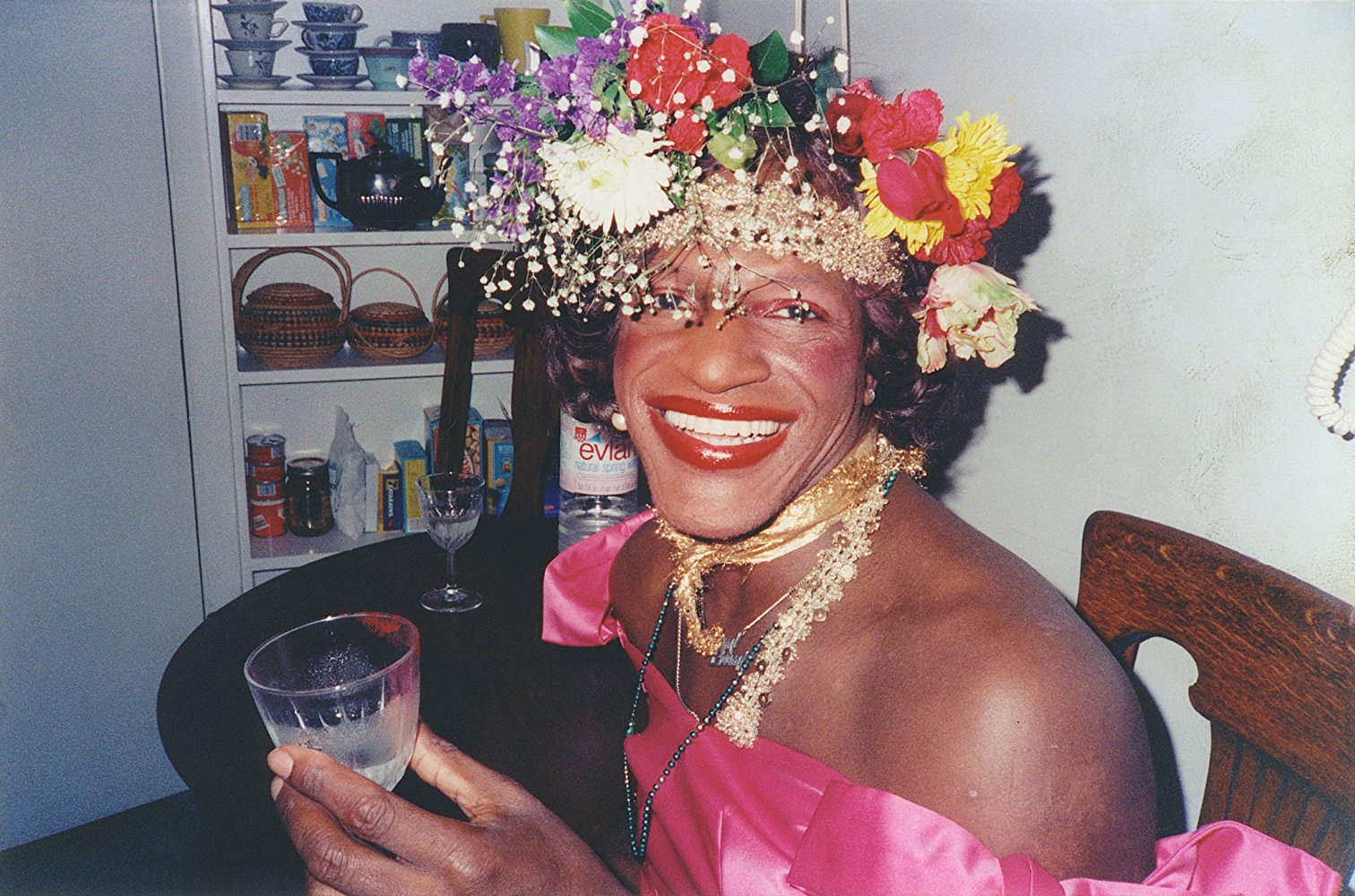Marsha P. Johnson was a black trans woman who lived in New York and is a hero of the 1969 Stonewall Riots. Although accounts — including Marsha’s — differ, she’s credited with throwing the first stone (or shot glass) back at riot police who raided the Stonewall Inn back in the days when homosexuality and wearing clothes not ascribed to your gender was illegal. The Stonewall riots went onto ignite a flame which sparked years of fights and activism that irrevocably changed the world for the LGBTQIA+ community.
While many historical accounts of this fervent time of fighting for equal rights erase Marsha’s actions — including the 2015 blip of a blockbuster Stonewall — Johnson was a pioneering gay and trans rights campaigner who devoted her life to making her community better, even when many parts of it sought to exclude her.
Today marks the release on Netflix of The Death and Life of Marsha P. Johnson, a documentary by David France, who previously directed the brilliant, heartbreaking How To Survive a Plague, which charts the AIDS crisis in New York throughout the 80s and early 90s. His latest film breathes life into the memory of Marsha P.: the unstoppable activist and performer, while also unpicking a wider thread: seeking answers around the endemic reality of cold-case murders of trans women of colour in the States, one of whom was Marsha.
The documentary dissects police mistreatment of Marsha both in life and death, using her case as an exemplar of the police brutality inflicted on trans women of colour, in America and the world over.
But when a person becomes the face of a movement, we oftentimes forget their actual achievements. Marsha P. Johnson, whose middle name famously stands for “Pay It No Mind” — something she once told a judge in court, and was released thanks to her charm — was a radical, visionary activist, an energised, avant-garde performer, a muse for artists and musicians, and an inspiring leader and organiser within civil, gay, trans, and sex workers rights’ movements. Here is a rundown of Marsha’s important legacy.
She was a lifelong civil and gay rights activist, who did so much more after Stonewall.
“I have been beaten, I have been thrown in jail, I have lost my job for gay liberation. Revolution now.” Johnson led countless rallies, held countless meetings and organised efficiently over years and years of fighting for LGBTQIA+ equality. She co-founded the GLF — the Gay Liberation Front — in New York, which eventually formed chapters across the world, from LA to Paris, London and Sydney. Their mission was not focused on law reform, instead calling for a change in the way gay and transgender people were treated by society. Marsha is known for her decades of challenging police, the state and society, as well as for her role in the starting hours of the Stonewall riots, as the “Rosa Parks of the LGBT movement.”
She was a radical queer political visionary, along with her sister Silvia Rivera.
“Gay sisters don’t think too bad of transvestites,” Johnson once said in an interview. “Gay brothers do.” Much like parts of the LGBTQIA+ community today, many circles within the community were exclusionary toward trans women, drag queens and people of colour. But Marsha was an ally across activist groups for the wider community, with the GLF, as well as for more specific lesbian-focussed groups. She attended meetings of the Daughters of Bilitis — the first national lesbian organisation in the States. Marsha, and her best friend Silvia Rivera, rallied against the prioritisation of the white middle-class gay male issues, causes for which they had both fought tooth and nail, and called for a movement which centred on anti-prison and anti-homelessness activism, causes which were realities for Johnson, who had spent much of her adult life on the streets.
She went on to co-found STAR, with Silvia Rivera.
Founded in 1970, Street Transvestite Action Revolutionaries was first and foremost a space for trans people of colour who had been living on the streets to take shelter. She and Rivera were known for sneaking their friends off the streets and into their hotel rooms, often up to fifty people at a time. Although STAR was short-lived, the unfunded project set out a manifesto which is still referred to, and considered radical even today: “Free gender expression, an end to prison injustice and homelessness, and the creation of an inclusive community that rejected binding definitions of gender and sexual identity.”

She was photographed by Andy Warhol.
In his 1975 portraiture series, Ladies and Gentlemen, Warhol photographed and colour-collaged the faces of different drag queens, trans women and transvestites on the New York scene at the time. By this point, six years after the Stonewall riots, Johnson had become a well known public figure for her activism as well as her performance. Always at the best clubs, Warhol instructed Bob Colacello, editor of Interview Magazine at the time, to find the “most interesting black and Latina” drag queens from The Gilded Grape in Greenwich Village, where he came across and selected Marsha to be part of the project.
She was on the cover of an Earth Wind and Fire record .
It’s impossible to find, but in an interview with OUT, her nephew Al Michaels recalls DJing in New York and pulling out an Earth Wind and Fire record, only to find Johnson as the star of the album artwork.
She pursued a life as “The Biggest Drag Queen in The World.”
The current biggest drag queen in the world, Mama RuPaul, cites Johnson as a major inspiration for herself and the drag community, describing her as the “True Drag Mother.” On an episode of RuPaul’s Drag Race in 2012, Ru told the contestants that “she [Marsha] had paved the way for all”. Aside from RuPaul’s appraisal, Johnson was a member of the avant-drag performance troupe Hot Peaches. Together, they put on shows of comedy songs and spoken word poetry in Jackie Curtis’s Loft, with names like The Wonderful Wizard of Us and Concentrated Camp, and even toured the shows across the US and Europe.
“The Johnsons” in Antony and the Johnsons was named after Marsha
Marsha is one of Anohni’s most important influences. On their eponymous 1998 album, the song River of Sorrow is inspired by the life and death of Johnson. In 1993, Anohni collaborated with Hot Peaches, appearing in a play about Marsha. In 1994 and 1996, Anohni wrote and directed The Ascension of Marsha P. Johnson at the Pyramid Club and PS122 in New York. For this show, Anohni received the New York Foundation for the Arts grant, and was able to record her first album and launch Anthony and the Johnsons as a result.
Her memory and politics are to be preserved at the Marsha P. Johnson Institute.
Launching in spring 2018, the Marsha P. Johnson Institute looks to maintain the politics of what Johnson and Rivera started with STAR. Founder Elle Hearns started the Institute to honour the memory of Johnson because her reality, through her idolisation, has been removed. “The mission of The Marsha P. Johnson Institute is to create a crucial entry point for black trans women and gender non-conforming femmes to obtain the skills, financial and programmatic resources necessary in advocating for an end to violence against all trans people.”
